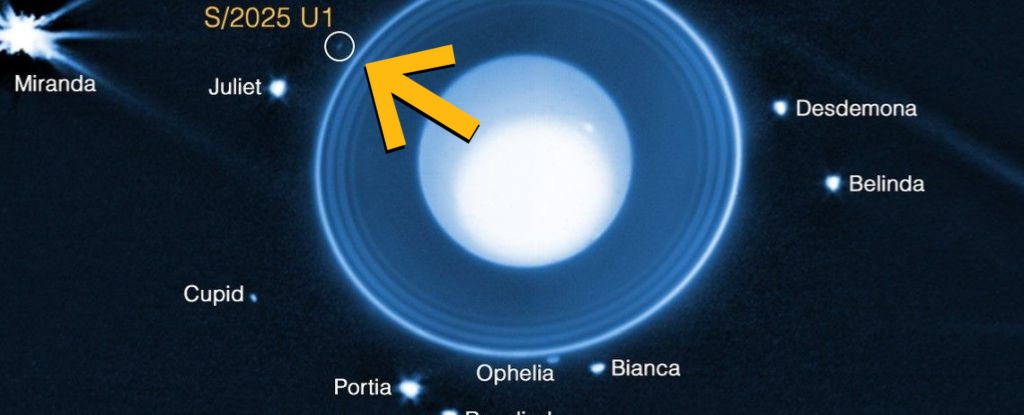
A recent discovery has increased the number of known moons orbiting Uranus to 29. The James Webb Space Telescope (JWST) identified a previously unseen object near the icy planet, which is estimated to be just 10 kilometers (6 miles) in diameter. This finding underscores the complex nature of the Uranian system and highlights how much remains to be understood about it.
The moon, designated S/2025 U1, was detected by JWST’s near-infrared instrument, NIRCam, on February 2, 2025. The telescope spent over six hours observing Uranus and its surroundings, revealing this tiny moon hidden outside the planet’s faint rings. Notably, this observation surpasses the data collected by the Voyager 2 spacecraft, which flew past Uranus in 1986.
Insights into the Uranian System
Planetary scientist Matthew Tiscareno from the SETI Institute remarked on the significance of the discovery, stating, “No other planet has as many small inner moons as Uranus, and their complex inter-relationships with the rings hint at a chaotic history that blurs the boundary between a ring system and a system of moons.” The new moon’s size and faintness suggest that even more undiscovered entities could exist within this intriguing system.
S/2025 U1 orbits Uranus at a distance of 56,250 kilometers from the planet’s center, nestled among 13 other small moons that lie within the orbit of the larger moon, Miranda. Its orbit is nearly circular, indicating that it likely formed in its current location. The moon awaits a formal name, with past naming conventions drawn from characters in the works of William Shakespeare or Alexander Pope.
Continuing a Legacy of Discovery
The discovery of S/2025 U1 highlights the ongoing advancements in modern astronomy, building on the legacy established by earlier missions such as Voyager 2. Astronomer Maryame El Moutamid from the Southwest Research Institute expressed enthusiasm for this progression, stating, “Now, nearly four decades later, the James Webb Space Telescope is pushing that frontier even farther.”
As scientists continue to explore Uranus and its myriad moons, the findings from JWST contribute to a greater understanding of the dynamics and history of the Uranian system. The ongoing research promises to deepen our knowledge of this distant planet and its surroundings, suggesting that perhaps a return to Uranus is warranted in the future.







